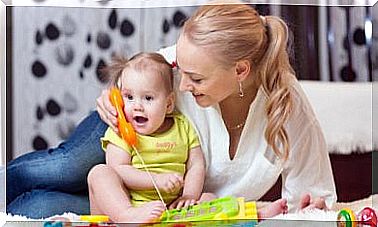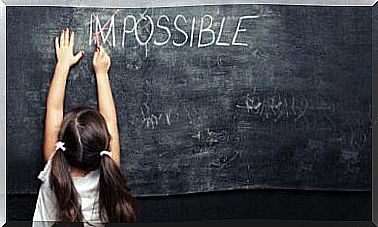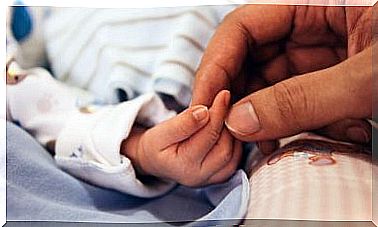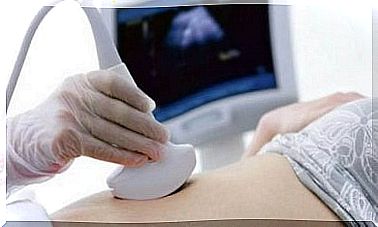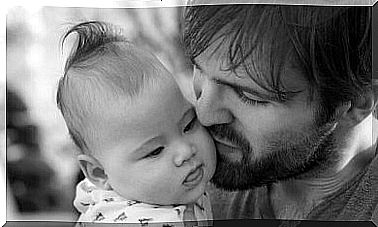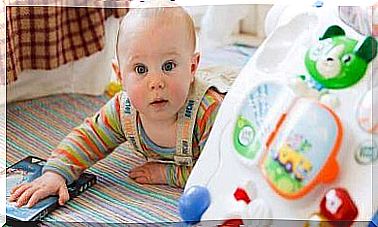The Development Of Crawling In Babies
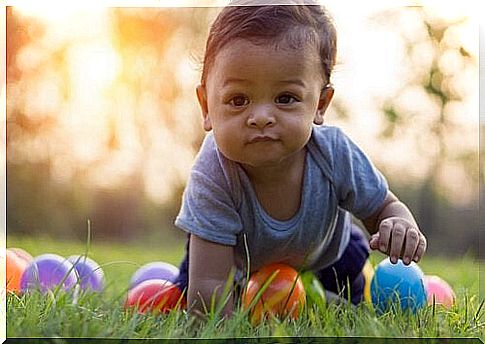
In this article, we’ll look at the evolution of crawling in babies and some of the benefits of crawling.
For example, before the baby starts walking, it goes through the crawling phase. It helps him move from one place to another and prepare him to use his legs.
The individual areas of the nervous system are coordinated. Each area interacts with other areas so that all of the baby’s skills can develop optimally.
This development is linear, from top to bottom, as illustrated by the law of cephalo-caudal development (from head to toe).
On the other hand, the law of proximal-distal development begins in the middle of the body and goes outwards.
How babies begin to crawl
The development of crawling in babies begins towards the end of their first year of life, i.e. around 9 months.
However, it must be emphasized that every child develops at their own pace and not all children crawl. So some babies learn to walk without crawling first.
The development of the movement sequences is divided into gross motor and fine motor skills.
Gross motor skills include posture, locomotion, and body coordination, while fine motor skills are related to hand-eye coordination, graphomotor skills, and so on.
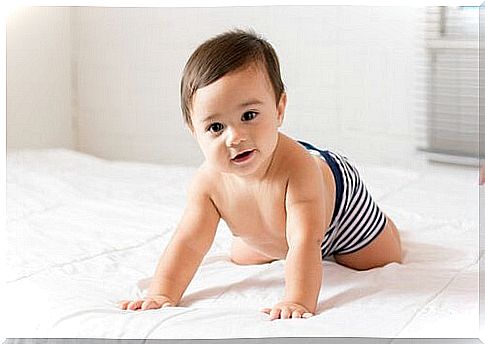
As soon as the child can keep their head straight and support themselves on their arms, they can learn to turn around. This allows it to develop some new skills.
The crawling and running phases require rotary movements that are independent of the shoulders and hips and must also be synchronized.
Skills that result from the development of crawling in babies are:
- rhythm
- coordination
- balance
- Development of the extremities
Tips for helping babies develop crawling
During the crawling phase, the baby can develop touch, perception, language, orientation, balance and various movements.
Here are some tips to help your child learn to crawl. If you notice that your child is starting to get into these positions, you can use these tips:
- When your baby begins to move on his hands, you can move his legs at the back in sync with this movement and thus encourage him to crawl. The most important thing is that the child wants to move and uses every part of their body to do so.
- When the baby is sitting, it helps him to prop his body forward with his hands. It should bend its knees and stretch its feet back with a slight pressure. So it comes into a crawling position.
- As soon as the child is in the crawling position, it gradually learns to move independently from the sitting position to the crawling position. It discovers that it can pivot back and forth in this position.
- After this phase, it should notice that it gets a little push when its knees push into the ground. That’s exactly what it takes to crawl. Eventually, it moves from a seated position to a crawling position. Ideally, it will perfect its technique and start crawling successfully at around 12 months of age.
Benefits of developing crawling in babies
A child’s motor activities are related to the development of their mental abilities. For example, in order to write, a child must properly develop fine motor skills and have the correct posture.
So crawling also offers some important advantages at the learning level, including the following:
- The crossed movement pattern includes the neurological function that enables physical locomotion. It consists in moving your right arm with the foot on the opposite side and doing the same with the other arm and foot. When babies crawl, they train their muscles, which also strengthens their spine and enables them to stand upright later.
- Crawling helps babies improve their movements and eyesight. You will learn to focus both eyes at a distance of 30-40 centimeters.
- The vestibular system is developed. It is responsible for controlling balance.

- Crawling stimulates the sense of touch in the palms of the hands.
- In the crawling phase, hand-eye coordination is fully developed.
- Crawling connects the hemispheres of the brain and thus creates information channels for the development of cognitive functions.
- It helps build cross-linking of the brain around 5-6 years of age.
- The children develop their communication skills by exploring and interacting with their environment.
Learning to crawl is very important for babies and has many benefits. Try using these tips to encourage your child to crawl so they can develop as well as possible.

